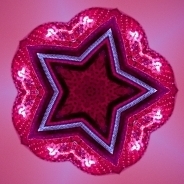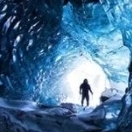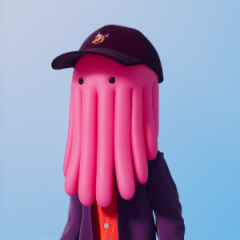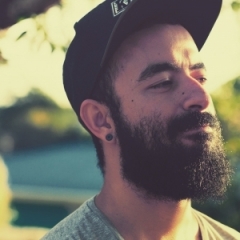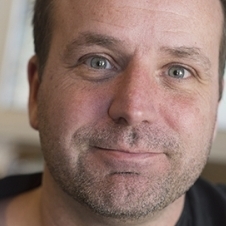Leaderboard
-
in all areas
- All areas
- Videos
- Video Comments
- Files
- File Comments
- File Reviews
- Pipelines Tools
- Pipeline Tool Comments
- Pipeline Tool Reviews
- Databases
- Database Comments
- Database Reviews
- Plugins
- Plugin Comments
- Plugin Reviews
- Images
- Image Comments
- Image Reviews
- Albums
- Album Comments
- Album Reviews
- Topics
- Posts
- Blog Entries
- Blog Comments
- Status Updates
- Status Replies
-
Custom Date
-
All time
May 3 2016 - April 19 2024
-
Year
April 19 2023 - April 19 2024
-
Month
March 19 2024 - April 19 2024
-
Week
April 12 2024 - April 19 2024
-
Today
April 19 2024
-
Custom Date
11/20/2021 - 11/20/2021
-
All time
Popular Content
Showing content with the highest reputation on 11/20/2021 in all areas
-
It seems that I work in exactly the same way as Keppn - with a large and well organised 'warehouse', and i agree 100% with his post. Fortunately I've stuck with R21 since the advent of the 'modern era', but from everything I've seen and read about the AB I wouldn't touch it... My honest feeling is that there is a real disconnect between the people at Maxon who are developing these sort of features (let's call them 'the coders') and the people who have experience of actually working in CGI and using these types of tools in production. It's almost as though the coders say, 'hey this would be a cool function / feature / approach!' but don't sufficiently understand or research or consider the implications for those who are actually going to use it. IMHO this has been a problem at Maxon since it's inception.4 points
-
So apparently the StarTrek - Discovery Season 4 has started and I am very excited about it. I used to hate StarTrek and love StarWars but my feelings changed after Disney bought LucasFilms (except The Mandalorian). My feeling towards StarTrek changed after the last 3 movies. StarTrek - Discovery begun in Season 1 somewhat at the same concept as the previous series but had superior CG. As the story progressed the scenario became more and more appealing. I like series that start a bit slow and predictive but show future potential. StarTrek - Discovery is now out of control with a re-imagined futuristic StarFleet closer to other contemporary SciFi futuristic concepts. I like the Intro sequence Spin-offs tailored for each Season and sometimes for special episodes. The intro mimics wireframe renders and FUI. For a TV show, the complexity of many scenes is just incredible. At the end of Season 2 there is a huge battle spanning in two episodes. The amount of particles, explosion's and spacecrafts made the quality look parallel to the last battle of The Rise of Skywalker. Below you will find some VFX breakdowns from all seasons And here's a time-lapse setting the control bridge stage3 points
-
AMD has released Radeon ProRender 3.3 for Blender and Radeon ProRender 3.3 for Maya, the latest versions of the Blender and Maya editions of its free, physically accurate GPU renderer. Better support for rendering volumes, plus DeepEXR export for Maya users Both versions get support for rendering environment fog and heterogeneous volumes like clouds and smoke in Full quality mode, although not yet on macOS. The Blender edition supports Blender’s Volume Scatter node and Principled Volume shader. In addition, the Maya edition can now export Deep EXR files for use in VFX compositing workflows. Availability and system requirements All the editions of Radeon ProRender are free downloads. The source code of the plugins is available under the Apache Licence 2.0. Radeon ProRender 3.3 for Blender is compatible with Blender 2.80+ on Windows, Linux and macOS. Radeon ProRender 3.3 for Maya is compatible with Maya 2018+ on Windows and macOS. https://www.amd.com/en/technologies/radeon-prorender full list of new features in Radeon ProRender 3.3 for Blender Version 3.3 New Features: Support for Fog and Heterogenous Volume rendering has been added to the RPR Full mode. Simulated volumes are now rendered on CPU and GPU. This includes support for the Blender Volume Scatter node and Principled Volume shader. Fixes: An output socket has been added in the Render Layer compositor node for Outline renders. An issue that could cause Material Previews not to work has been fixed. An error when Shadow Catcher objects were enabled with viewport rendering has been corrected. The following issues with Image Sequence texture not working have been fixed: Viewport and Final renders using texture sequences now look correct; Cyclic and Auto Refresh options in the image texture now work correctly; Support for numeric image filenames has been added. Hide/unhide could sometimes not work correctly with viewport rendering — fixed. Viewport upscaling now always uses 16-bit depth, which has fixed an issue with upscaling working on macOS. Emission Strength values > 1.0 now work correctly in the Principled Shader. Motion blur now works correctly with the “Center on Frame” and “Frame End” options. Setting the minimum samples option from 1 to 16 is now allowed (default is still 64). Hair rendering fixes: Hair UVs now work correctly; Textures are now supported for the color input of the Principled Hair BSDF and Hair BSDF; The color and melanin settings of the Principled Hair BSDF now look more accurate. Particle objects with hair on them were not rendering the hair — fixed. An issue with the “World” light being empty has been fixed. An AOV output “Camera Space Normal” has been added. Exporting .rpr files now takes into account material overrides. A warning is now added when an object with an excessive number of faces is exported. When a shader node was “muted,” that was not working in some cases — fixed. Differences in point lights between Cycles and ProRender have been mitigated. The Albedo AOV now passes the “Base color” on the Toon shader. A halo no longer appears around shadow and reflection catcher objects. AOVs passed through transparent or refractive materials — fixed. Noise convergence with emissive materials using textures has been improved. Performance with outline rendering has been improved. Performance regression on WX7100 GPUs has been fixed. The Object ID Lookup node now works in the Full mode. Objects with Toon shaders attached now cast shadows correctly if the flag is disabled. An issue detected on the latest NVidia drivers has been fixed. Known Issues: Volumes are not implemented on macOS. Vega GPUs with AMD 21.10 drivers can cause an issue when using the ML Denoiser. full list of new features in Radeon ProRender 3.3 for Maya Version 3.3 New Features: Support for Fog and Heterogenous Volume rendering has been added to the RPR Full mode. Simulated volumes are now rendered on CPU and GPU. An option of exporting DeepEXR files for compositing has been added. DeepEXR files contain multiple depth samples, allowing compositing better with depth. Support for the Voronoi Texture node has been added. Fixes: The texture cache location is now saved between sessions. Scenes that have many instances could crash IPR — fixed. A crash could happen with a correct HDRI image on an environment light — fixed. Support for Object ID and Random Color lookups in shader nodes has been added. After a critical render error, users could not render again without restarting Maya — fixed. Optimizations to the export of objects with deformation motion blur have been made. An error with references to materials in another scene has been fixed. The Albedo AOV now passes the “Base color” on the Toon shader. A halo no longer appears around shadow and reflection catcher objects. AOVs passed through transparent or refractive materials — fixed. Better noise convergence with emissive materials using textures has been achieved. Performance with outline rendering has been improved. Performance degradation on WX7100 GPUs has been eliminated. The Object ID Lookup node now works in the Full mode. Objects with Toon shaders attached now cast shadows correctly if the flag is disabled. An issue detected on the latest NVidia drivers has been fixed. Known Issues: Volumes are not implemented on macOS. Vega GPUs with AMD 21.10 drivers can cause an issue when using the ML Denoiser.2 points
-
Yeah, I think starting off from a somewhat big library is not uncommon nowadays. Thank you for the discussion! I'd be glad if you could forward this to the AssetBrowser's dev team?2 points
-
Just wanted to be clear on that since the AB deleting original files would have been a catastrophe. Your scenario is certainly unfortunate and you are likely not the only one facing this problem.2 points
-
@srekyou're right, that statement of "AB changes my files" is imprecise and shortened. But let me explain my usecase of working with my asset-library, I hope it explains, where my problems come from. Over the years of working in 2D and 3D, I have built up a collection of assets that weighs 5.7 Tbyte (it spans the usual stuff... 3D objects, VDBs, materials, HDRIs, preset-style scene-files, cached sims, etc., etc.). This library is like the backbone of my productivity. That doesn't mean, I'm just a "clipart-masher" -- often, I block out things with the assets from my library and then continue to replace every single bit with "the real deal". So, in order to efficiently work with this library, I frequently do the following things: add new assets delete unusable stuff to de-clutter rearrange folders rename stuff add meta-data (rating, comments, etc. -- (I do that with Adobe Bridge, that generates xmp-sidecar-files I mentioned above, too) backup (+backup offsite) So, this is my warehouse, and it's in perfect order. I have full control over the assets to do the things I described in the list. I can access it with every app; C4D's "Content Browser" was one of them. No problems - worked very well! Now in comes the Asset Browser. I'd really love to use the Asset Browser, as it has some really cool functionality. Chris Schmidt's video on that was eye-opening. But I can only think of three scenarios with my usecase: Copy all of my assets to AssetBrowser -- My original files are unchanged -- but now I would have to do all "housekeeping" twice. -- I also would have double the footprint in terms of Terabytes. Copy some of my assets to Assetbrowser -- This would somewhat mitigate the footprint problem -- But now I have a big warehouse next to a small one. -- I would need to keep track of "where is what" and all the logistics that comes with that. Move everything to Assetbrowser -- Now my filenames are scrambled, metadata inaccessible and I would have to rebuild the structure -- I can't access my assets with other apps anymore. All scenarios are totally not working for me. And the frustration comes from being forced to use Assetbrowser. Why remove the Content Browser, when other almost-deprecated functions are allowed to linger on for years? tldr; When saying "Ab scrambles my files!" it's short for: "I want to use the 3rd scenario, but can't."2 points
-
Insydium sure is playing hard ball with its customers. Rubbing me the wrong way.2 points
-
1 point
-
This "too late" really gives a negative feel doesnt it? I think I understand the whole thing about maintanance and the idea behind it. But saying "hey, too late!" to a customer, I dont know man... I think I also keep asking myself, how companies like Pixologic manage to be such good guys, for SO LONG. I've gotten now, new and shiny Zbrush 2022, paying zero for it, after paying for the full license back in 2016. Since then, I paid nothing... nada, and the software has improved so much over the past years.1 point
-
Dave - I understand where the confusion is here - and it is confusing! It helps that you're familiar with the AOV workflow. In the daylight scene above things are different to the 'headlight in the dark'. As you've posted above Redshift has both 'reflection' and 'specular' passes - to be combined as you've done. In Redshift - and I don't know about other renderers such as Octane - the specular pass contains specular reflections from lights only. This is the key difference. So In your example immediately above you have the reflections pass showing reflections from objects in the scene, You also have the specular pass that shows (specular) reflections from lights only. That includes your HDRI dome light in the background. That's why you have a mix of content, some in the reflections pass, some in the specular pass. With the car headlight / night shot all the reflections / specular you see - both the more broken reflections on the road, and the long vertical light reflection - are from the headlight - so I'm expecting they will be predominantly in one pass. That's why I'm thinking you can't break it down further. To test this: If you enable AOV's and do a bucket render in the renderview you'll be able to examine all the AOV's from the menu on the left that defaults to 'beauty'. I expect that all of the headlight reflection / specular would be contained within the 'specular' AOV. I hope this helps : ) PS: The project looks good! PPS: The answer to your 'light groups AOV' question: Yes : ) Expect lots of AOV's and comping!1 point
-
I just watched the season premiere, the effects were amazing as usual for this show. It was a little apparent that covid protocols were in place... many of actors were distances from each other most of the time and there was a greater dependence on digital sets. None of this took away from the show, it was just something i noticed. I like Discovery and Picard, they have their faults, so did all the other series. Next generation was pretty embarrassing the first 2 seasons at times but while I think Discovery is particularly overwrought with emotional cue cards, they have taken Star trek into new directions. I never wanted any new Star trek to be a new Next Generation or Original Series so I am fine seeing what new creators come up with. So far they are entertaining and that's fine. Some of the earlier shows could be pretty one the nose and heavy handed and I do sort of miss that now and then but I'm sure these new shows willet there. LOL I am not in love with the programmable material stuff, the ships reforming into now shapes doesn't work for me visually but it's all the highest quality stuff to look at!1 point
-
Cheers Mike, I'm pretty comfortable with rebuilding AOVs in comp, really love the flexibility it allows for tweaking the final image. Regarding the light group AOVs would I be correct in saying I'd have to render all the different passes (specular, diffuse, emission, reflection etc) for each separate light group? which would mean the amount of information has to be doubled or tripled according to how many groups I have? That makes sense, I guess the redditor was suggesting I could mask out the headlight from the reflection pass of the respective light group. But as you say the same could be done without the use of light groups. I think my problem stems from my confusion about the differences between specular lighting and reflection. Here's the beauty from a previous scene in my sequence: and then here's the specular lighting pass: and the reflection pass: So what confuses me is that the road's specular highlights from the bump map are visible in the specular lighting pass, but aren't in the reflection pass - Which is why I thought that specular and reflection could be separated. For context the scene is light by a hdri and an infinite light with GI turned on. Would really appreciate if you could help me thoroughly understand how the two passes differ, apart from the obvious visual deviation. Thanks again for the help 🙂1 point


